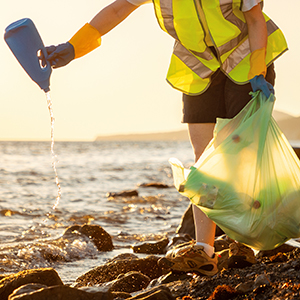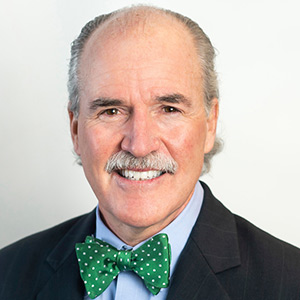Renowned environmental health scientist Frederica Perera, Ph.D., delivered the 2020 NIEHS Spirit Lecture on Mar. 5. Her talk was titled “Translational Research to Prevent Environmental Threats to Children: From Chemicals to Climate Change.”
 “NIEHS has been the main, visionary funder of our work on children’s environmental health. It’s so important to our field to have this enlightened support,” said Perera. (Photo courtesy of Steve McCaw)
“NIEHS has been the main, visionary funder of our work on children’s environmental health. It’s so important to our field to have this enlightened support,” said Perera. (Photo courtesy of Steve McCaw)Perera is a Columbia University professor and the founding director of the school’s Center for Children’s Environmental Health, which is co-funded by NIEHS. Her work focuses on pregnant women, children, and minority groups, who can be especially vulnerable to pollution.
“She is internationally recognized as a pioneer in the field of molecular epidemiology as it relates to better understanding how problems in the environment can lead to adverse health effects and disease,” said NIEHS Acting Director Rick Woychik, Ph.D.
Early-life vulnerability
In the late 1970s, after learning about an environmental disaster in Minamata Bay, Japan, Perera became inspired to pursue a scientific career in environmental health.
 “Dr. Perera has been a prolific author, with over 330 publications,” noted Woychik. (Photo courtesy of Steve McCaw)
“Dr. Perera has been a prolific author, with over 330 publications,” noted Woychik. (Photo courtesy of Steve McCaw)“Women there had been eating fish that were very polluted by mercury from industrial sources,” she told the audience. “The women were fine, but their children had serious cerebral palsy-like symptoms and intellectual disorders.”
“There are 82 billion neurons in the average brain, but almost all were formed before we were born,” she said. “You can imagine how highly choreographed and complex this development is over a short time window, and how readily any external exposure — whether a physical toxicant or psychosocial stressor — could disrupt these processes.”
 A packed audience listened closely to Perera’s lecture. (Photo courtesy of Steve McCaw)
A packed audience listened closely to Perera’s lecture. (Photo courtesy of Steve McCaw)Health effects over time
At Columbia, Perera and her colleagues seek to understand how early-life chemical exposures affect children’s health and brain development, and they look for potential long-term problems. The scientists follow cohorts of mother-child pairs in New York City (NYC), Poland, and China, tracking health effects of various substances over time.
In NYC, participants come from low-income African-American and Dominican households. Some findings from that cohort include the following.
- Chlorpyrifos — Prenatal exposure to this insecticide was associated with lower birth weight, memory problems, and Parkinson’s Disease-like changes.
- Phthalates — Found in cosmetics and plastic packaging, these chemicals were linked to reduced IQ in children who had been exposed to high concentrations prenatally.
- Polybrominated diphenyl ethers, or PBDEs — These flame retardants were linked to reduced IQ in children who had high concentrations at birth.
- Polycyclic aromatic hydrocarbons, or PAHs — Exposure can come from breathing car exhaust, fossil fuel combustion, cigarette smoke, and wood smoke, among other routes. The toxicants were linked to problems such as reduced birth weight, asthma, and lower IQ.
Many factors at play
According to Perera, understanding the effects of such exposures often is complicated by other factors, including genetics, nutrition, socioeconomic status, and climate change. She said that despite that complexity, studying individual chemicals still is beneficial.
“Most diseases require a set of sufficient causes,” Perera explained. “If we can take one of those causes out, it would be possible to prevent a child from developing a disease. Environmental exposures, by their very nature, are preventable once we identify them as harmful.”
Perera said that lowering the risks of environmental exposures will require a mix of regulatory policies, market reforms, and better data on the health and economic benefits of pollution mitigation.
Special award
“It’s a real honor for me to have the privilege to introduce Dr. Perera as this year’s recipient of the NIEHS Spirit Lecture Award,” said Woychik.
 Angela King-Herbert, D.V.M., Spirit Lecture Committee member and head of the National Toxicology Program Laboratory Animal Medicine Group, presented the award to Perera. (Photo courtesy of Steve McCaw)
Angela King-Herbert, D.V.M., Spirit Lecture Committee member and head of the National Toxicology Program Laboratory Animal Medicine Group, presented the award to Perera. (Photo courtesy of Steve McCaw)The award recognizes outstanding women who balance their careers with public engagement, volunteering, and mentorship.
“She works with many different community groups to address the safety and health of children,” he said. “Dr. Perera is a fabulous communicator and is doing cutting-edge, exciting research.”
(Payel Sil, Ph.D., is an Intramural Research Training Award fellow in the NIEHS Inflammation and Autoimmunity Group.)









